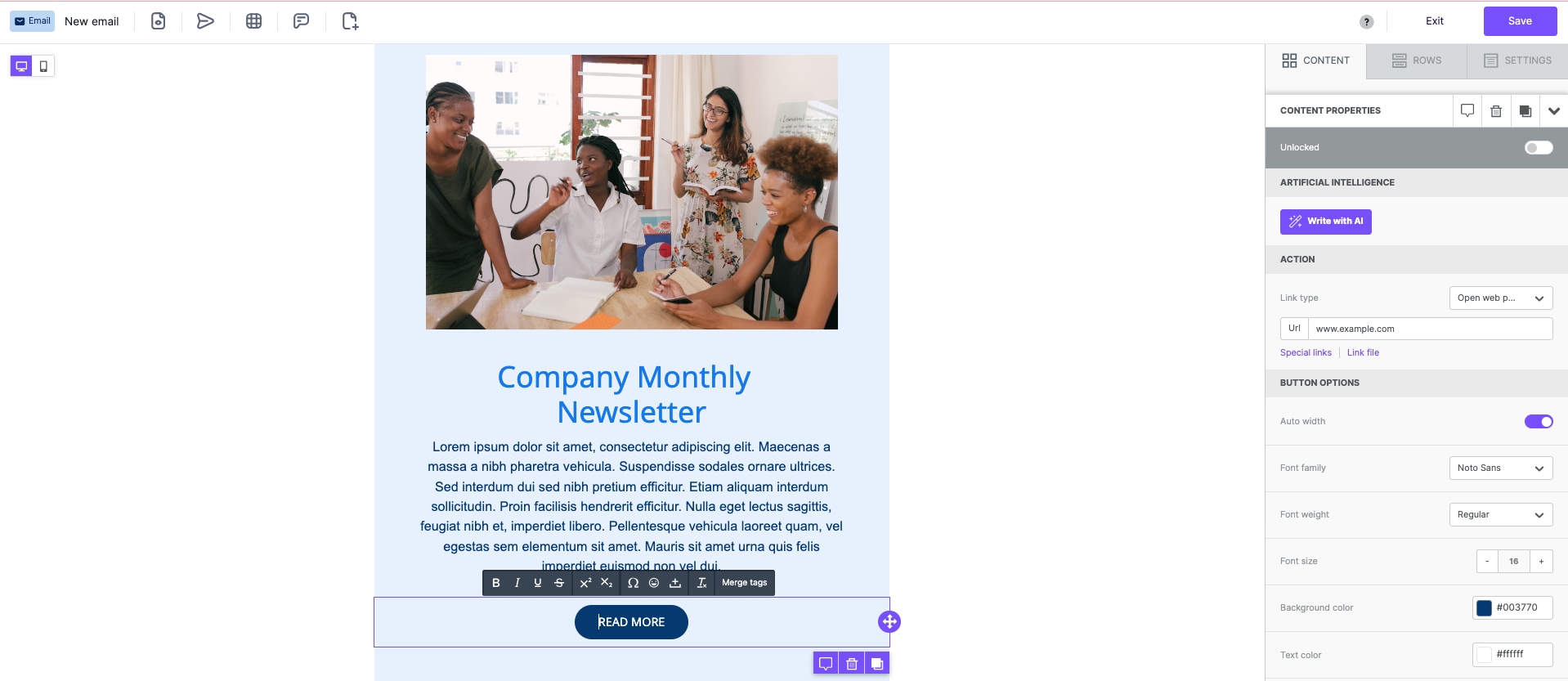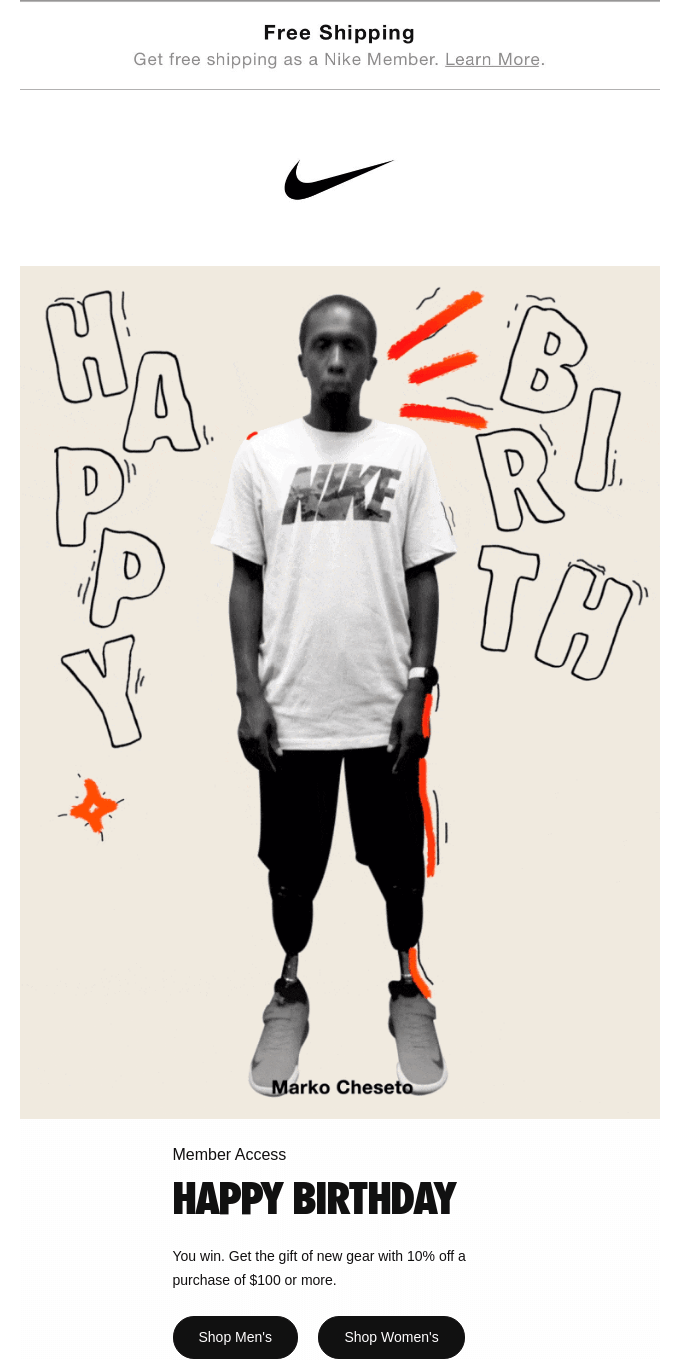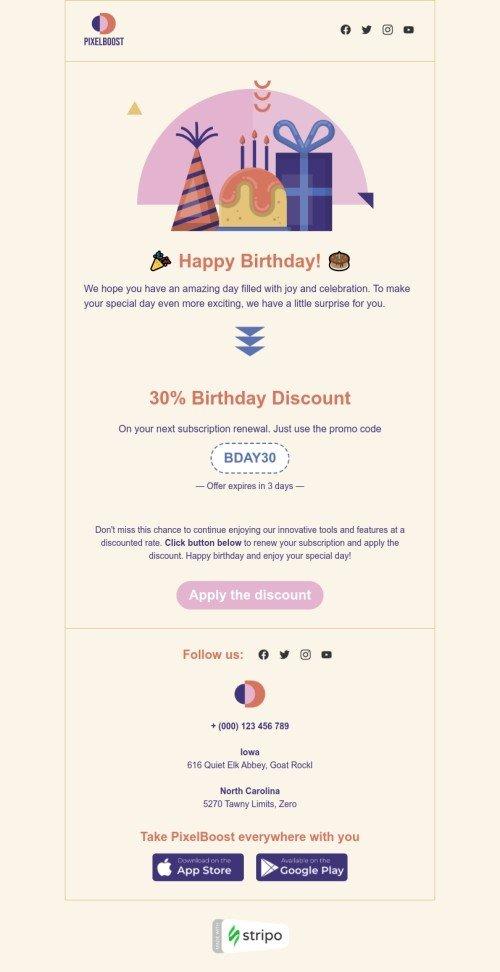A product launch is the culmination of months or years of intensive work by multiple departments and teams, and making that product successful is a challenge. In fact, about 95% of new products released will fail. Your product launch email campaign can play a big role in whether your launch sinks or swims.How do you make every new product email count? You learn from the experts. We’re highlighting some particularly effective product launch emails and sharing key insights about why they work (and how you can use that wisdom in your campaign).
How Email Marketing Can Support a Successful Product Launch
Email marketing can be a critical component of your product launch marketing campaign because it reaches people who are already engaged with your brand. After all, they’ve already given you their email address. Through the use of strategically timed email sequences of various types of product launch emails like feature announcement emails, pre-order emails, and launch event invitations, you can generate interest in an upcoming product and prompt customers to buy as soon as the product launches.An effective product launch email should include several key elements:
- The product’s name so customers know that this is a brand-new product
- A brief “pitch” that tells customers what’s unique and amazing about this new product
- Attention-grabbing images to give customers a sneak peek into the new product
- A prominent call-to-action like a “buy now” button that takes customers directly to the product page, making it easy for you to capitalize on quick decisions and in-the-moment excitement for the product
The Difference Between New Product Announcements and Product Launches
A new product announcement is one of the first ways you’ll market an upcoming new product. It’s all about generating interest and letting customers know that there’s an amazing new product coming their way. Just like movies have trailers months before they’re released, product announcement emails are the “trailers” of the product world.A new product launch email, on the other hand, is the email you send out when the product is officially released to prompt customers to follow through and make a purchase. If the product announcement email is the trailer, the product launch email is the email that allows people to buy tickets to the movie. This email is all about driving sales.While product announcement and product launch emails each have their own purposes in a product introduction email campaign, each one makes the other more successful. They’re part of a cohesive campaign to hype customers and get a flurry of launch-day orders.
How to Get Product Launch Emails to Convert
What does conversion look like for a product launch email? It depends on where this particular email falls in your launch campaign. Depending on where you are in your product launch, a successful conversion could be:
- Buying the new product
- Pre-ordering the new product
- Signing up for product updates
- Signing up for a giveaway of the new product
How you reel in those conversions, on the other hand, is more complex. It’s a matter of factors like your subject line, the email’s timing, understanding what appeals to your audience, writing compelling content in the email, using images to direct recipients’ attention and showcase the product, making it convenient to make a purchase or convert, and more. A well-constructed, conversion-minded product launch email needs to bring all these strategies together.
1. Encouraging Continued Engagement with Opt-In Emails
Opt-in emails are emails that allow and encourage readers to sign up for specific mailing lists or notifications. In the case of a product launch, for example, you could invite people to opt-in for updates about the new product.In order to support a product launch, you want as many people as possible to be in the know. A few weeks before the launch, offer an opt-in deal. If your product or service has a premium option, encourage your readers to sign up for it. Explain that this is how they can stay up-to-date on all the exciting stuff you’re doing, helping them stay in the know before the general public — and then make good on that promise by providing a sneak peek at your new product. Alternatively, you can offer an opt-in just for details on the launch rather than as part of a premium service, as Ruggable did here.Subject line: Something a-DOOR-able is coming…

Ruggable product teaser email
2. Sparking Conversation with Mysterious Product Emails
When it comes to information about an upcoming product, sometimes less is more. In fact, it’s strategic. When you have a product launch coming up, consider sending mysterious product emails - teaser emails that tell customers that something big is coming but don’t tell them what it is.Using our email editor to craft a cryptic email, teasing that something big is in the works (i.e. your new product) but not yet divulged, is a great way to draw interest.If you’re planning to send more emails in your product launch email series, send this mysterious email a couple of weeks prior to launch. Otherwise, you can send this email whenever you want. Huda Beauty kept things puzzling with this product launch email showing a blurred-out version of its new product.This tactic can be valuable when you want to start generating interest, but your product still has some details to work out. It serves a double purpose in that case: beginning to build interest without making any commitments you may not be able to keep. It’s also beneficial if you’re in a highly competitive market and you don’t want your competitors to know what you’re working on until it’s released.Even if it isn’t a priority to be secretive about your new product, the mysterious aspect can generate serious buzz. It’s especially helpful if you have a sizable following because people will be chatting with each other about what the announcement could be.Subject line: Something NEW is coming

Huda Beauty "Mysterious" product launch email
3. Preorder Emails Capture Sales from Early Birds
A preorder email is an email that allows customers to pre-purchase the new product before it is launched. This allows customers to ensure that they’ll get a product from the first release in case the product sells out, and it allows you to capture sales in advance and gauge interest in the product.About a week out from launch day, consider sending a preorder or early-bird-access email so your loyal customers can get a jump start on their shopping. Of course, sending a preorder email means you’ll need to announce what your new product is before launch day — and that’s completely fine, as long as you save some of the juicy details to create more hype (for now, go with “we’re making a better alarm clock” instead of “we’re making an alarm clock with a radio, nightlight, and water feature”).What does a good preorder email look like? A preorder email should generate excitement about your new product, using sensational language to explain the product’s features and benefits. Testimonials help, too — like Food52 added here.Make sure to be clear about the terms of the preorder too, such as whether customers are paying the full amount now or whether their credit card will be charged when the product ships. You also need to make it clear and easy for customers to make their purchases, such as with a prominent “preorder now” button that takes them to the preorder purchase page.Subject line: Our Five Two wooden spoons are nearly here — preorder now.

4. Taking Advantage of the Big Day with Day-of Product Launch Emails
It’s launch day, and that means it’s time to send a great product launch email! If you send a preorder email, your product launch message will be similar; again, the goal is to generate a sense of excitement around the product and prompt customers to purchase.Remember when you kept a lid on some of the details in your pre-order email? Now is the time to pull out all the stops and really explain what makes your product shine: How is it different (and better) than comparable products? Include high-quality photos, too, at the top of the email and in the body copy.Want to give your product launch email the best chance to drive conversions? Follow these tips:
- Lead with an attention-grabbing subject line, like “It’s here! has dropped, and YOU can get one!”
- Put the key information above the fold (meaning that people don’t have to scroll down to see the most valuable details
- Create a visually prominent, easy-to-find call to action, like a button that says “order now.”
- If you have this data available, include the recipient’s name in the subject line or body copy to personalize it and grab their attention.
Subject line: A few new things to feel good about…

J.Crew product launch email
5. Build and Grow the Customer Relationship with Follow-Up Emails
Follow-up emails after your product launch are an important part of your launch campaign. Sent a few days after your product launch, these emails keep the conversation going and can keep the orders coming in too.You have several options here: You can ask happy customers to leave reviews on your website or a third-party platform. You could solicit user-generated content, asking for photos of people using the product. Or you can find a fresh angle to explain how great your product is. Even after launch, keep riding the excitement your campaign has generated to stay on the top of readers’ minds.
Try BEE Pro's Product Launch Email Templates
Your product launch isn't just about creating conversions. Use your product launch email series as a starting point to cultivate a sustained conversation that you can continue long after your launch is over. By thoughtfully crafting your series of emails, you'll be able to communicate your brand value.Ready to create your own product launch email sequence? BEE's easy HTML email editor offers a simple way to create beautiful and responsive on-brand emails. BEE’s set ofproduct launch email templates is tailor-made for announcing new products, and each one can be edited in a few clicks to feature your brand visuals and make your new product shine!Editor’s Note: This post was updated on April 2023 to ensure accuracy and comprehensiveness.
Share this post with your friends! Pin it on Pinterest ?


























